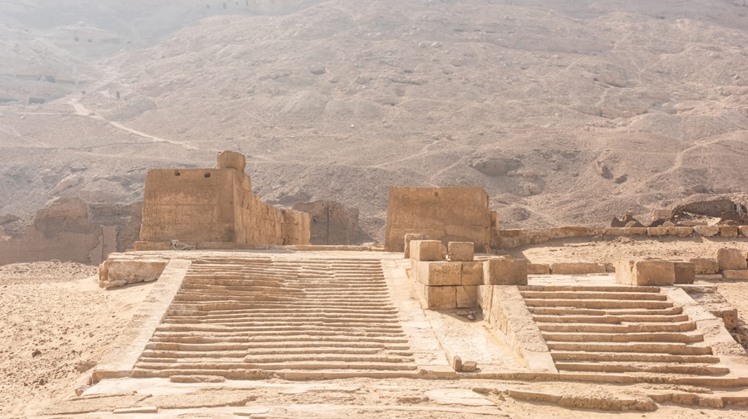A few days ago, the joint Egyptian-German archaeological mission succeeded in discovering more than 13,000 ostraca dating back to the Ptolemaic, early Roman, Coptic and Islamic eras, during excavations in the archaeological area of Sheikh Hamad near the Temple of Atribes, west of Sohag Governorate. Region.
Atribes dates back to about the fourth century BC, which is a relatively late period compared to many other Egyptian sites, its temple is located to the west of the residential area with houses built of mud bricks, which are still covered under the rubble, and there is also the mountain with its Greco-Roman tombs "until the fourth century approximately AD.” Above the tombs are the limestone quarries from which the temple stones were cut.
The greatest credit for the discovery of the features of Atribes goes to the English archaeologist William Flinders Petrie 1906-1907, the excavations of the Egyptian Antiquities Authority 1981-1997 and the joint Egyptian-German mission between 2003 and 2012.
The Temple of Ptolemy XII is one of the most important temples in the region, completed by the Roman emperors Tiberius to Hadrian. The Holies View of a unique procession of daily deities, each representing a day of the Egyptian calendar, each carrying a vase with a lid in the form of a falcon's head topped with a sun disk.
The Temple of Ptolemy IX is located to the west of the Temple of Ptolemy XII. The temple was dedicated to the worship of the deity "Min-Ra."
The archaeological area includes the rocky temple of Asclepius, which consists of a courtyard, a stone facade, and two rooms carved in the rock. It was divided by two rows of columns, which can be dated from broken pottery that was found to the fifth and sixth centuries AD.
The visit concludes with the open museum, which includes the re-installation of some stone blocks for the facade of the temple, where the remains of the entrance, the corniche, and the lintels carried on columns with capitals in the form of the face of the goddess Hathor.
 Thu, Dec. 23, 2021
Thu, Dec. 23, 2021